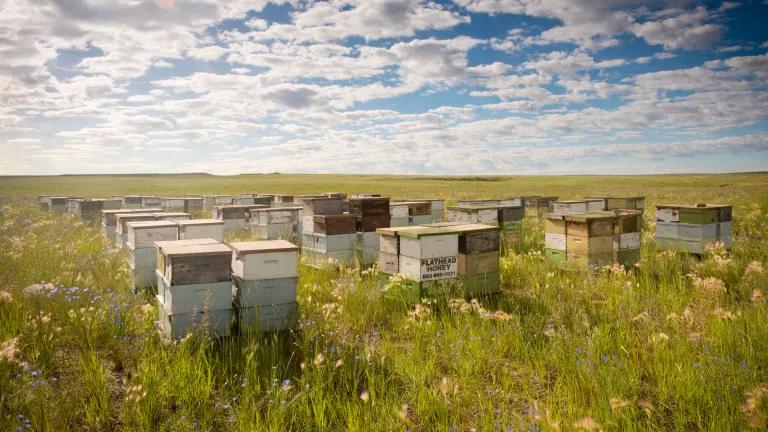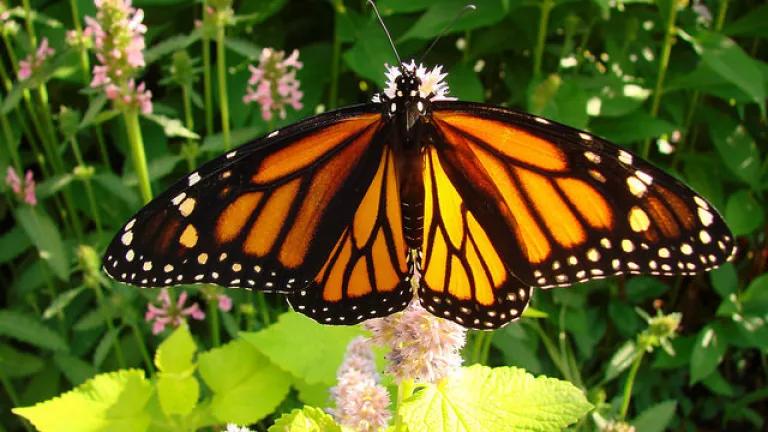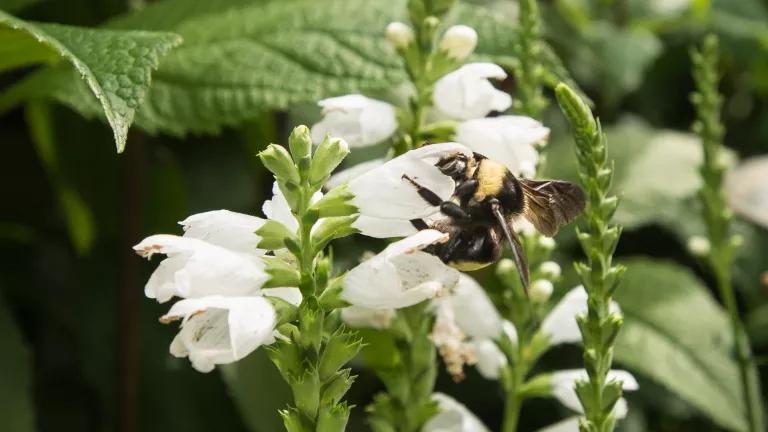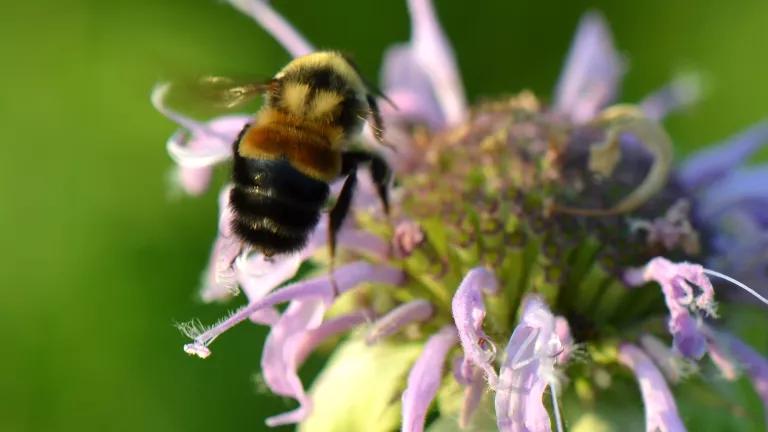
Honey bee hives in the summertime
Summer brings warm weather, plenty of sun, and (at least in non-COVID times) the happy cries of schoolchildren released for summer break. This year, it also brought sobering numbers on our worsening national bee losses, along with a few glimmers of hope in states stepping up action to protect bee and pollinator populations from toxic pesticides.
First, the bad news: just in time for National Pollinator Week, the Bee Informed Partnership released their yearly bee colony loss numbers. Like last year, the annual colony loss rate ticked up, making this past year the second worst on record, with beekeepers losing an average of 45.5% of their hives. Numbers in many states were even worse, with loss rates in New York and New Jersey at 54% and 48% respectively—making it their second worst year too.

Dead bees outside the entrance to a hive.
While the chemical industry has long fought an “information war” to deflect blame to other valid causes of bee loss such as climate change or parasites, only one cause overlaps with the sudden spike that began fifteen years ago—namely, the sudden uptick in the use of highly toxic neonicotinoid or “neonic” pesticides (see timeline here).
In addition to the mountain of evidence now linking neonics with bee losses (see e.g., here), research also shows the problem is much bigger than bees. Neonic pollute the environment on a vast scale—showing up in half or more of U.S. streams as well as in the bodies of half the American people. And due to neonics’ potency as neurotoxins, even small levels (such as those frequently seen in water in New York, New Jersey, and across the country) have been linked to losses of birds, the collapse of fisheries, and birth defects in white-tailed deer. Neonic pollution and its impacts are so widespread that many scientists now liken it DDT and a second “Silent Spring,” while health experts are increasingly raising alarms about neonics’ human health harms.

Neonics find their way into water, and ultimately our bodies.
Fortunately—while the EPA still seems stuck in neutral from a Trump-era determination on neonics—states are now taking the lead. The happiest news comes from Maine, where the legislature passed a bill last month that will prohibit use of neonics in residential landscapes (except for invasive species treatment). While Connecticut, Maryland, Massachusetts, and Vermont have all prohibited “over-the-counter” neonic products, the Pine Tree State is the first to go a step further by also clamping down on chemicals spread by landscapers and hired pest control applicators—a huge chunk of the neonic problem.
Further down the Atlantic Coast, other exciting developments followed. The New Jersey legislature appears poised to become the second state to ban most non-agricultural neonic uses, while the New York Senate overwhelmingly passed the Birds and Bees Protection Act. The NY bill targets not only non-ag uses, but also neonic-treated corn, soybean, and wheat seeds—which account for the single largest and most widespread use of neonics in the Empire State, but provide “no overall net income benefit” to farmers according to a recent, massive report from Cornell University. While neither bill achieved full passage in June, both are still very much alive, and will be up for consideration again when the weather turns colder.
With the security of our bees, our food, our ecosystems, and our health in jeopardy, the question must not be whether to rein in rampant, destructive neonic use, but how quickly we can do it. The model developing across the U.S. doesn’t seem to follow the European Union’s complete outdoor neonic ban, but rather target the “dumbest” neonic uses—those uses which (ironically) account for the vast bulk of neonics contaminating our environment, but provide no economic benefits to users or are easily replaced with safer alternatives.
NRDC will be fighting every step of the way in these states to make sure that bees (and the rest of us) finally get a break from neurotoxic neonic pesticides. If you live in one of these states (or even if you don’t), you can take action:
- If you live in New York, click here.
- If you live in New Jersey, click here.
- If you live anywhere else, click here.




